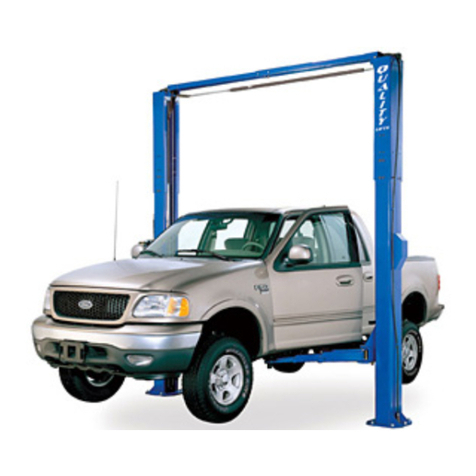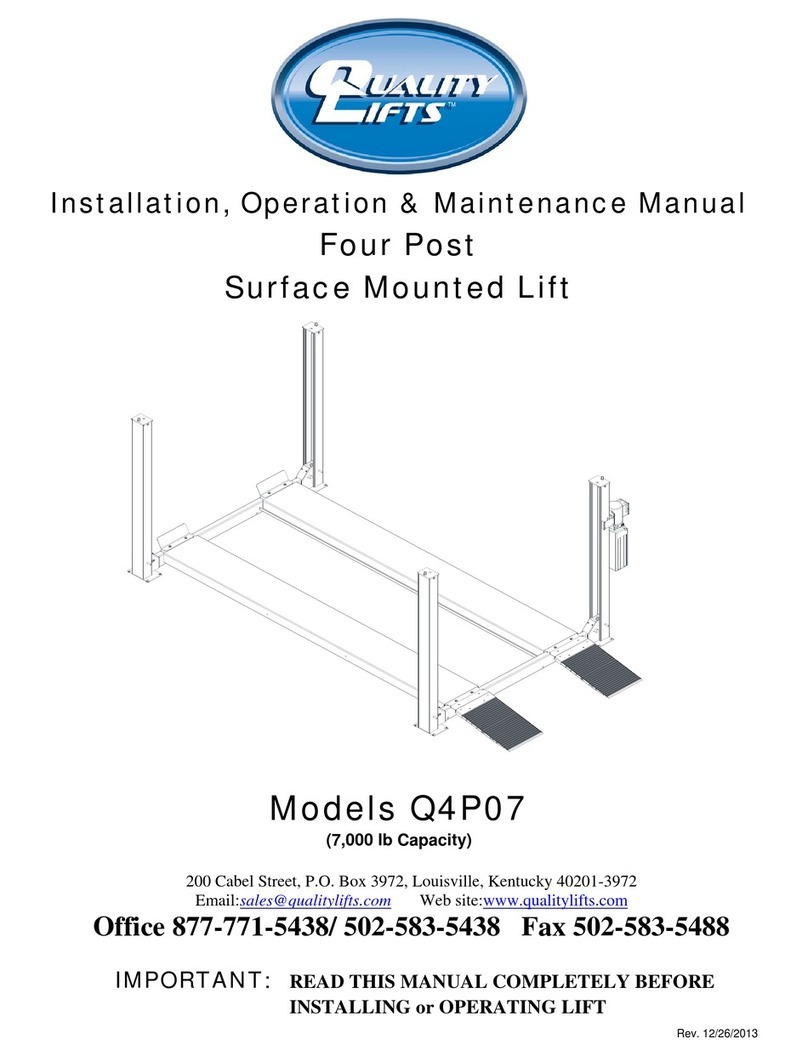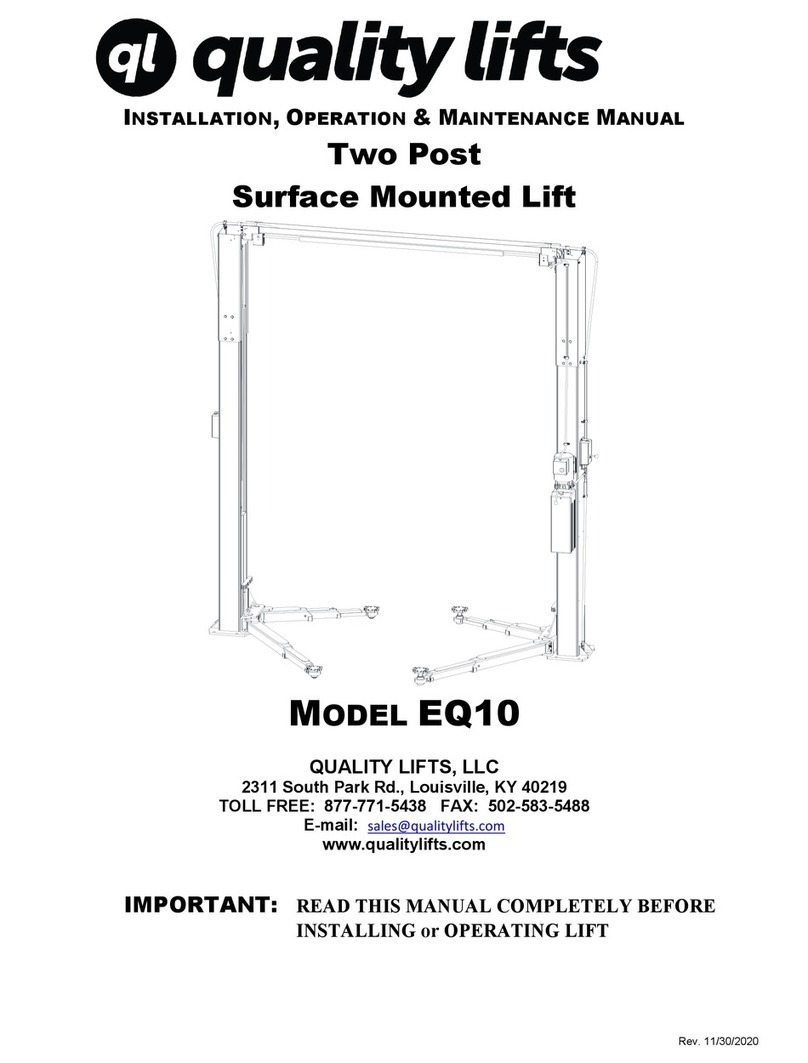
Models Q4P09H, Q4P09X & Q4P09W
Installation, Operation and Maintenance
10 Rev 12/26/13
Q4P09-IOM-Q.doc
NOTE: When attaching the return line to the
bulk head i n the run way, make sure it is
securely attached at the power unit, and the
hose is not twisted or kinked into a position
that will lead to getting caught on the po wer
unit reservoir or the stud on the column
sides. Rais e the lift and carefully watch the
path the hose is riding u p the column, adjust
connection at the power unit and/or runway
bulkhead to allow the hose to move up
between the power unit and colum n. Make
sure the hose doesn’t catch on the column
caster lug as the lift rises.
38) Install O-Ring end of the straight hydraulic
fitting (9/16-18 O-Ring x M14x1.5-6g) to
power unit output port. Connect the
hydraulic hose to the hydraulic bulkhead
fitting in the power runway.
Do Not Use Teflon Tape or Pipe Dope on
fittings.
39) Connect the power unit to a suitable
electrical power source. The standard power
unit is 115 volt 50/60 Hz single phase
requiring a dedicated 15 amp single throw
circuit breaker to operate lift at full capacity.
40) BE CERTAIN ALL FITTINGS AND CONNECTIONS
ARE TIGHT. IT IS THE INSTALLERS
RESPONSIBILITY TO INSURE SYSTEM IS LEAK-
FREE. Fill the Power Unit with three gallons of
clean 10wt anti-foam anti-rust hydraulic oil or
Dexron III ATF. DO NOT USE OILS WITH
DETERGENTS.
41) Energize the power unit and raise the lift
approximately 1 ft off the ground and look
underneath the power runway to verify that
the cable lugs are resting firmly against the
cylinder pull bar.
42) To level the runways and crossbeams use a
4 ft. level. With the lift resting in its locks, find
the highest corner and adjust the other three
column ladder bars until the runways are
level front-to-rear and side-to-side. Tighten
jam nut against bottom side of each column
top plate.
43) Adjust cables until all four locks are
synchronized when lift is raised. Tighten
cable jam nuts against adjustment nuts.
44) Raise and lower lift several times to bleed
hydraulic cylinder. Hydraulic cylinder is self
bleeding. Lower lift and check fluid level in
reservoir. Add fluid as needed.
45) Run lift to full rise and continue running motor
approximately 5 more seconds. Check
hydraulic hose and connections for leaks.
Re-tighten fitting if leaking.
COLUMN DECAL PLACEMENT
46) Center the decal on the front drivers side
column and rear passenger side column.
47) Apply decal 4” from top of columns, Fig 22.
Fig 22 – Decal Placement
48) Place the Caution, Warning and Safety
Instructions decals seen on page 4, on the
power unit as shown, Fig 223.
Fig 23 – Power Unit Decal
OWNER/OPERATOR CHECKLIST
SAVE THESE INSTRUCTIONS deliver them to
owner/user/employee along with other materials
furnished with this lift.
49) Demonstrate the operation of the lift to the
owner/operator and review correct and safe
lifting procedures using the Lifting It Right
booklet as a guide.
50) Complete the Installation Checklist/Warranty
Validation questionnaire with the owner.
Review the terms of the warranty registration
card, and return the card and a copy for the
questionnaires to:
Quality Lifts, Inc.
P.O. Box 3944
Louisville, KY. 40206
































